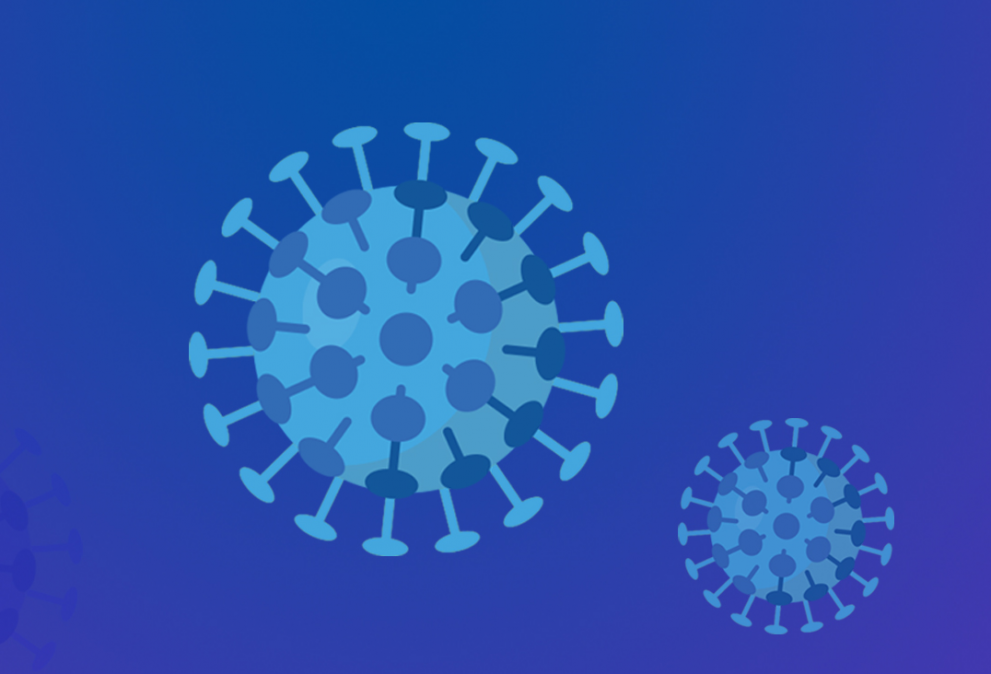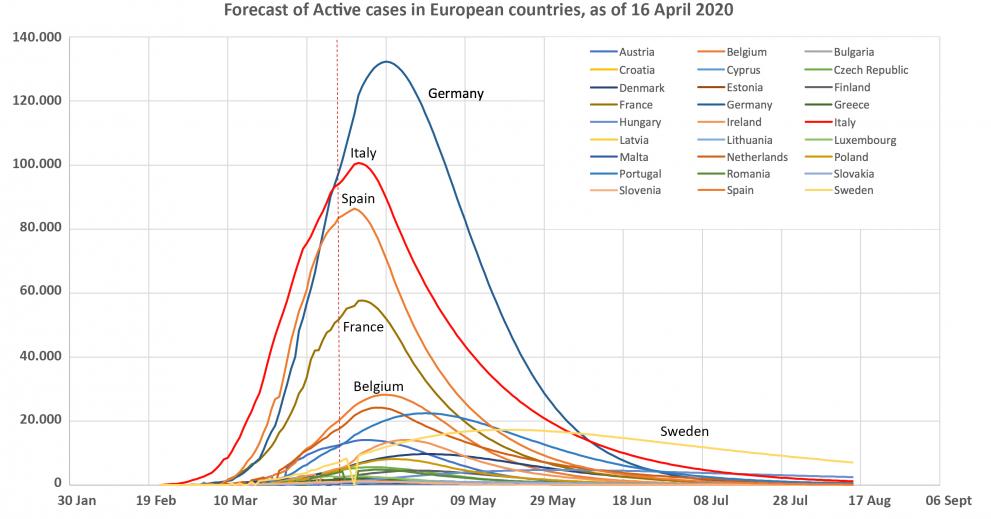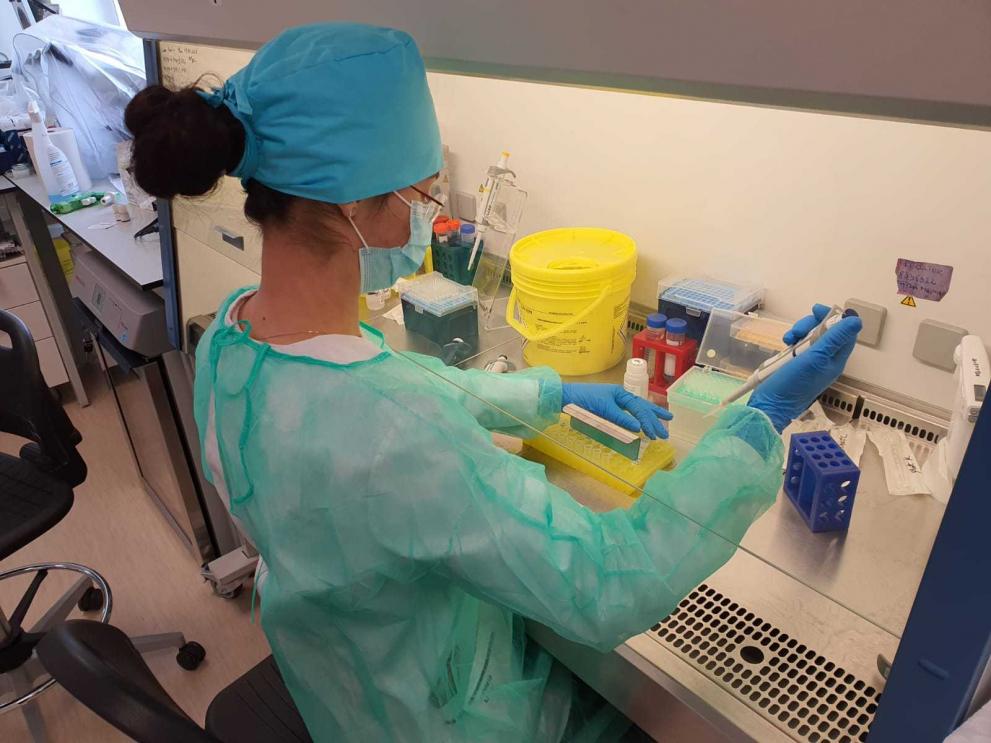
From the preparation of guidelines and control materials for testing and better characterisation of the pandemic, to the detailed analysis of epidemiologic and economic impacts, the JRC is evaluating and anticipating the evolution of this crisis so that it can be managed effectively.
Security remains a top priority and the JRC is involved in monitoring an early detection of risk signals.
Social aspects and the environmental perspective cannot be forgotten – the JRC is carefully monitoring the situation from the citizens’ perspective. Understanding their fears and concerns will allow national and international institutions to better manage the crisis.
Exit scenarios
The JRC has been monitoring and modelling the expected epidemiologic development of the pandemic since the very beginning of the emergency in Europe, in order to provide evidence on the possible evolution of the crisis and potential exit strategies.
Current models take into account health, the economy, security, social and environmental aspects and will evolve to incorporate mobility, demography and other variables.
The JRC has also launched a unique database of containment measures and casualties, so that the measures can be evaluated.
From these data, experts can predict the total number of positive cases expected in countries across Europe.
This analysis feeds into the Commission’s overall European roadmap to lifting coronavirus containment measures.
JRC experts are also defining indicators to estimate the lockdown factor of countries, which can be used in modelling cases evolution and creating a subnational database of epidemic data and implemented measures.

This analysis feeds into the Commission’s overall European roadmap to lifting coronavirus containment measures.
Health: detection, testing and sequencing COVID-19
EU countries are using different types of tests and/or are testing at different scales.
An effective lifting of containment measures across Europe needs to factor this in too.
The JRC has designed a control material for accurate testing and contributed to European Commission guidelines with test performance criteria intended as additional guidance to the requirements laid down by EU legislation.

Genomic information is providing useful insights on how the virus is spreading and evolving. The JRC is following the evolution by countries over time.
Economic Impacts
In close collaboration with other Commission services, the JRC is assessing the economic and social impacts of the pandemic and related containment measures.
This covers estimating the macroeconomic, regional and sectorial impacts (including health, education, agriculture, tourism and banking).
We are also evaluating and monitoring a number of economic and social domains key for the economy (from venture capital and foreign direct investments to value chains, the evolution of the social economy and High Growth Enterprises).
The JRC is assessing the impacts of existing or potential policy measures to alleviate social impacts and support restarting the economy (tax and social security reforms) as well as evaluating future scenarios.
Experts are also exploring the role of transformative resilience in the context of the pandemic.
A report shows how this crisis can be an opportunity to progress and "bounce forward" through adaptation and transformation.
A mix of prevention, preparation, protection, promotion and transformation measures can provide the impulse needed for this.
Security
If the crisis leads to supply chains for critical materials being disrupted, this could have an impact on many sectors, including water supply and sanitation.
The JRC has done a preliminary assessment of the situation, which suggests that these risks are under control.
The JRC is also monitoring cyber threat trends related to the pandemic, evaluating their implications and providing scientific advice.
Teleworking and digital learning poses cybersecurity, data protection and online safety challenges. The JRC is developing online safety guidelines for parents, and advice to policymakers on future actions to address the pandemic’s impact on digital learning and education.
Social aspects
The JRC has contributed to the preparation of a survey on living and working during the pandemic, to discover the effect on our jobs, lives and mood. The results are shown in maps and graphs for 110 countries, updated on a daily basis.
Experts also provide a weekly report on sentiment and emotions expressed in the media and on social media.
The most expressed emotions remain anger, surprise and fear, although disgust and sadness are also present in reporting in some countries. More positive sentiment has been seen in Italy in the past week, possibly linked to the hope that the peak has now passed.

The JRC is liaising with behavioural experts in different EU countries to share best practices. Behavioural evidence is also being integrated into projects - including an ongoing study on vaccination demand and acceptance.
The Environmental dimension
Daily forecast maps of air pollution (PM2.5), temperature and relative humidity are produced. The virus can be stable in aerosol form for hours or more, depending on factors such as temperature and humidity.
The European Commission Atmospheric Observatory in Ispra, and other sites in Lombardy, are collecting data on air pollution and greenhouse gases to assess the effects of lockdown measures.
Reductions in economic activity are starting to leave a mark on the concentration of small particulate (PM10) air pollutant concentrations. However, greenhouse gases like CO2 remain in the air much longer and do not show a decrease in concentrations.

Related Content
Daily newsbriefs on coronavirus
Epidemics Intelligence from Open Sources (EIOS) platform
Solidarity with Europe – JRC science to tackle the coronavirus crisis
Details
- Publication date
- 24 April 2020
